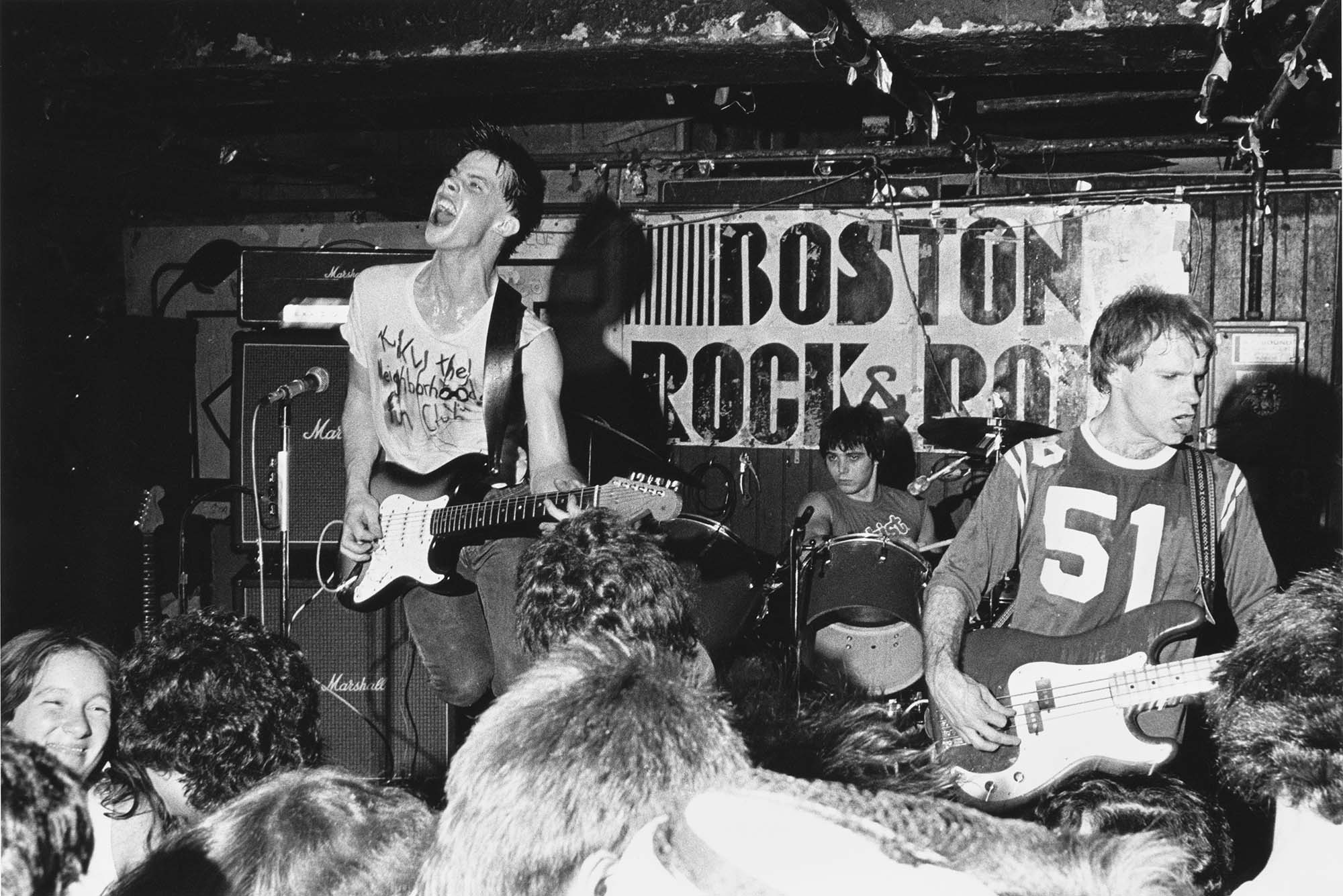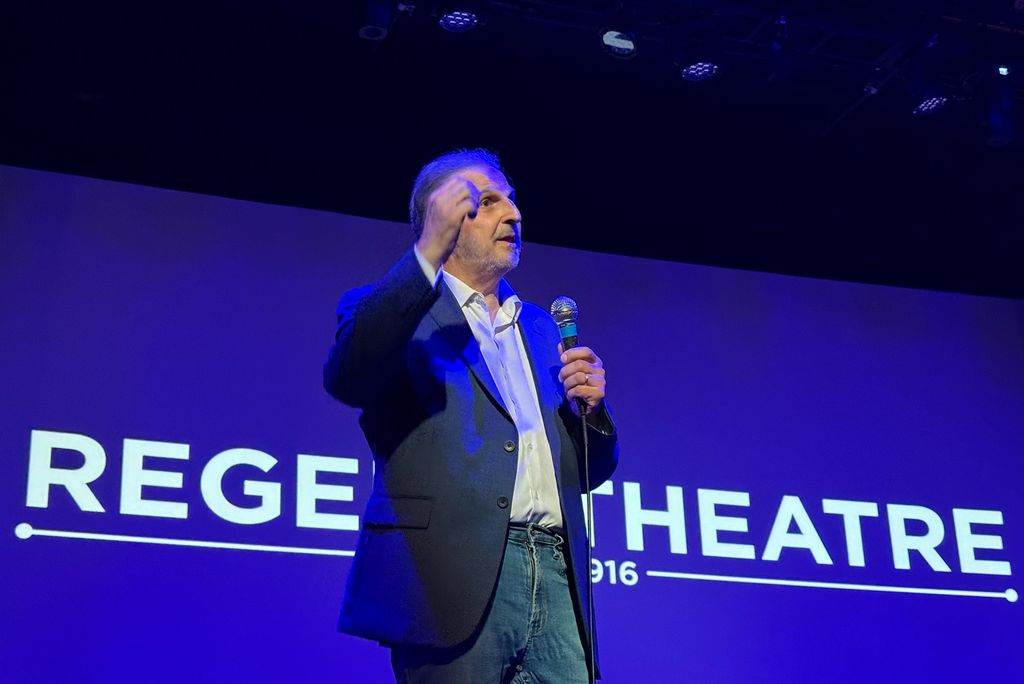Alum’s New Documentary Celebrates Boston’s Once-Thriving Punk Scene

Steps from the Charles River Campus, the Rathskeller club—also known as the Rat—was the beating heart of Boston’s bygone punk scene. Photos courtesy of Vincent Straggas
Alum’s New Documentary Celebrates Boston’s Once-Thriving Punk Scene
Vincent Straggas’ Life on the Other Planet to screen November 19 in Arlington
People called it the Rat for two reasons: the first being that the Kenmore Square music venue’s official name was the Rathskeller. The second was that it was filthy—tremendously so.
“When you hear stories of what the Rat looked like, it’s not an exaggeration—something like that would be condemned today,” says documentary filmmaker Vincent Straggas (CGS’80, COM’82). “There were pipes running across the room and sometimes there’d be rats running across them. But you would pay hardly anything to get in.”
Straggas, who, like many other BU students of a certain era, spent more than a few nights at the Rat, remembers the now-shuttered club fondly. The grit was the point. Much like its Manhattan cousin, CBGB, the Rat’s environment fomented an entire social universe—and a unique music genre, according to Straggas —where local punks could meet, perform, express themselves, party, fight, and fall in love. It was the undisputed center of activity for Boston’s 1970s and 1980s music scene—but it wasn’t the only club of its kind.
“Kenmore Square was filled with these places, and if you kept walking you’d find all these little hole-in-the-wall bars that had live music,” he remembers. “If you only had five bucks in your pocket, you could go out and have a night. So many of the clubs were free to get into, and that had a lot to do with it.”

The “it” Straggas is referring to, the heyday of Boston’s onetime punk music scene, is the subject of his new documentary, Life on the Other Planet. The film premiered on October 24 to a sold-out screening and concert, and will screen again at 7 pm on November 19, at Arlington’s Regent Theatre.
Straggas is an Emmy Award–winning producer, director, writer, and editor for film and television. With his Waltham, Mass., film company, Flagday Productions, he has worked on more than 150 projects in the past 25 years. Previous feature-length docs include Afterwords, Love is Blind, and Member of Parliament.
Life on the Other Planet is a little different from the average rock doc. Straggas conceived of the idea to interview bands, former club owners (including Jim Harold, the owner of the Rat), and members of the scene—around two dozen people total—during the doldrums of the COVID-19 pandemic. After amassing more interview material than he knew what to do with, plus tons of archival footage and photos, he changed the focus of the project. Instead of getting bogged down in the details of who-played-what-where or who-signed-whom-when, he decided to create something more sweeping: a love letter to Boston told through its soundtrack.

“It took me about six months to figure out how to edit it, which was really weird for me, because normally I can just look at something and know how to approach it,” he says. “But I kept looking at it from the musicians’ point of view, and then I thought, ‘Wait a minute. The only way I can tell this story is to have Boston be the star of this film, and make everybody else the costar.’”
You won’t hear much about Aerosmith, Boston (the band), or the Cars in this documentary. While they and other national acts may have made a few appearances at the Rat, they didn’t encapsulate the era the way the local acts did, says Straggas.
“The people who played there and made their mark are groups like the Nervous Eaters, Willie Alexander, the Real Kids, the Neighborhoods,” he says. “I consider those groups to be the Mount Rushmore of Boston rock and roll.” (The Nervous Eaters performed at the film’s October 24 premiere.)
The list is extensive, and Straggas interviewed many of those same groups for his film. Some have long since broken up, some have reunited, and some never stopped playing.
“There are going to be people who see this film and say, ‘How come you didn’t include this band or that band?’ And it’s impossible, because there were so many,” Straggas says. “I mean, literally, there were thousands. Back in the day, the Boston Phoenix printed up 3,500 bands that were part of the scene.”
Being a college town, Boston was already a breeding ground for kids looking to join a band, Straggas explains. There were more artsy, experimental groups, like Human Sexual Response, and then there were the punk and garage outfits formed by kids from Somerville, Chelsea, Dorchester—like the Real Kids and the Neighborhoods—who performed ragged, raw, and confrontational music. Both types of bands frequented the stage at the Rat.
“You had to really know Boston at the time to understand the music that came out of it, and how it influenced people,” Straggas says. “It was a gritty, grimy city, but it allowed for a lot of artists to flourish, and it was all formed by the landscape of Boston.”
Life on the Other Planet screens Wednesday, November 19, at 7 pm, at the Regent Theatre, 7 Medford St., Arlington, Mass. Purchase tickets here. Find information about future screenings here and at @lifeontheotherplanetmovie on Instagram.